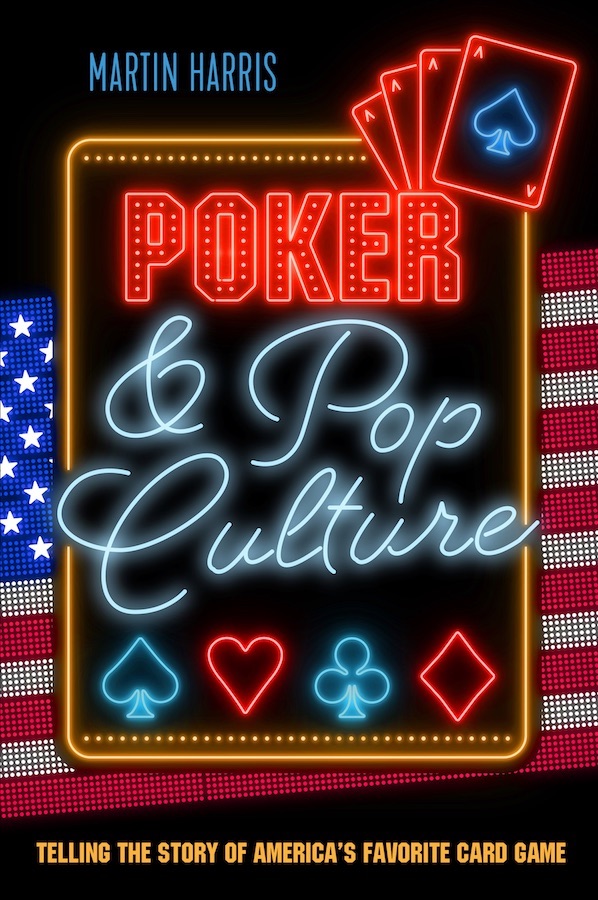The Draw and Stud Kingdoms in the Poker Domain
That is to say, if we created a taxonomy of card games with poker being the “domain” up at the top, draw and stud would be the top two “kingdoms” just underneath, with all the other games belonging to one or the other.
In modern poker parlance, it’s common to see three categories of games identified -- flop games, draw games, and stud games. That’s a helpful system, say, if you’re choosing variants for a mixed game and want to ensure you’ve got a balance between different game types.
You could, for example, have a nine-game rotation with three flop games (no-limit hold’em, pot-limit Omaha, Omaha hi/lo), three stud games (seven-card stud, seven-card stud hi/lo, and razz), and three draw games (2-7 triple draw, 2-7 no-limit draw, Badugi), which would also provide a good mix of a few “big bet” games among the fixed-limit ones.
Then if you added further variants, you could try to keep the three categories balanced so as not to favor one over the others, since many players often come at a mixed game with more experience and/or knowledge in one of the three.
However, if you go back in history and think about how poker was initially introduced and developed in the 19th century, it actually makes sense to slide the later-introduced flop games over and think of them as a subcategory of stud (its own “phylum,” you might say). In other words, while the hundreds of different poker variants introduce all sorts of distinctions making each unique, the most significant one determines whether or not a game can be said to derive from draw or stud -- namely, whether or not players can see any of the cards making up their opponents’ hands.
Games derived from draw typically involve players showing none of their cards as they proceed through whatever rules govern the order of play, betting, hand ranking, and so on. Meanwhile games derived from stud typically involve players revealing some portion of their hand to each other, e.g., as “up cards” or shared “community cards.”
Even with these two seemingly unblendable characteristics -- i.e., either all your cards are hidden, or they are not -- there exist some hybrids (we might call them) that try to combine draw and stud in some fashion. I’m thinking of draw games that involve sharing cards, of which Spit in the Ocean might have been the first step down that road (a draw game that has one card dealt face up in the middle to indicate what is wild). There are other draw games incorporating something like “community cards,” too, that seem to combine the categories.
But you could argue as soon as any portion of a player’s hand is no longer hidden, the game no longer belongs to the draw “kingdom” and should be forced to emigrate over into stud.
This point -- that all poker variants essentially come from either draw or stud -- is one made by Al Alvarez in his Poker: Bets, Bluffs and Bad Beats (2001). There he points out that all poker games, “even the craziest, are variations on two basic themes: closed or draw poker, in which all the cards are dealt facedown, and stud, in which four of the player’s five or seven cards are dealt faceup.”
Alvarez is speaking of earlier pre-hold’em variants when making that point, but the taxonomy being suggested could still be said to include the flop games, which obviously were derived from stud.
Could be fun, working out an entire taxonomy of poker variants. How would we classify Badeucy, for example? Put the Badeucy species in the poker domain, then the draw kingdom, then the fixed-limit phylum, then the multiple-draw class, then the lowball order, then the Badugi family, and finally the deuce-to-seven genus?
I wrote about the first references to draw poker in this week’s “Poker & Pop Culture” column, noting how the introduction of the draw was the first meaningful variation from what might be called the “original” form of poker sometimes called “Old Poker” in which five cards were dealt, a round of betting followed, and then there was a showdown.In the column I make a few gestures toward the idea that being able to discard and draw evokes (in a way) various “American” ideas of being free to try to improve your status if desired. Check it out and see if you buy that argument or not:
I’ll be talking about the introduction of stud next week, and will be suggesting this point as well that all poker variants might be thought of as belonging to one of these two “kingdoms” of games. Let me know if you have any thoughts about any of this as I pull together my own.Poker & Pop Culture: Life, Liberty, and the Pursuit of a Better Hand
Image: “Taxonomic ranks” (adapted), Annina Breen. CC BY-SA 4.0.
Labels: *the rumble, Al Alvarez, draw poker, history, Poker & Pop Culture, PokerNews, Stud















1 Comments:
Very clever! I wasted, I mean invested, way too much time looking into the historical breakdown of the events at the World Series of Poker recently (starting with http://www.thetapoker.com/wsop-poker-variations-introduction/). I broke things down by Game Type (draw, flop, and stud), Game Limit (limit, pot limit, and no limit), and High/Low (high, low, and hi/lo). If you add in buyin amount, you get a complicated, multidimensional grid (and as I was looking at tournaments, the mixed games didn't fit neatly anywhere).
I love your taxonomy idea, but the reality is much more complicated. For example, the "fixed-limit phylum", "multiple-draw class", and "lowball order" would each appear in many places. Convergent evolution does happen, but it suggests that a genealogical tree isn't the most accurate representation for poker.
Post a Comment
<< Home